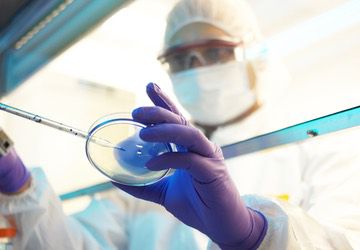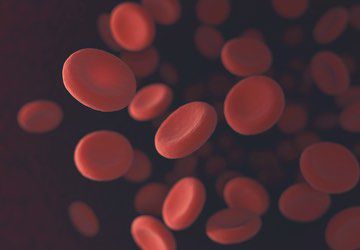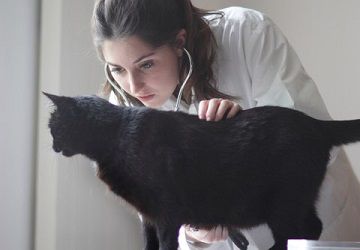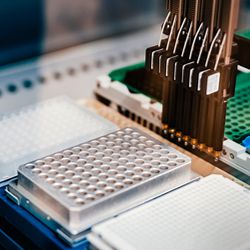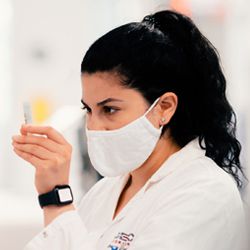IDEXX Reference Laboratories
IDEXX Reference Laboratories support resources
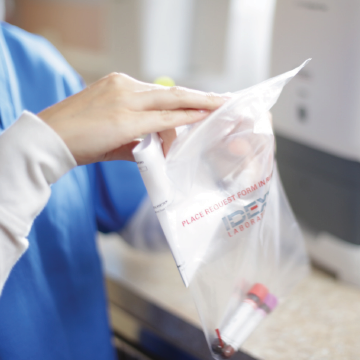
Resources for laboratory customers
- Contact support
- Laboratory forms
- Order supplies
- Prepare and submit a sample
- White papers, articles, and diagnostic resources
Reference Laboratory Support
+27 (0) 10 500 2080
Laboratory forms
Requisitions forms
Order laboratory supplies
Stay updated on innovations and educational opportunities
Prepare and submit a sample
What should I do if I want to submit a sample for a test that is not listed on the Test Request Form?
Please call IDEXX Laboratories at +27 (0) 10 500 2080. Many additional or specialised tests are available at the laboratory.
What should I do if I cannot obtain enough blood for all the tests I want to request on a specific patient?
Please telephone the laboratory at +27 (0) 10 500 2080. We may be able to help you prioritise the testing or provide alternatives and write your priorities on the request form.
What should I do if I have a question about a sample submission or interpretation of a result?
If the answer to your question is not in this FAQ section, please feel free to call IDEXX Laboratories at +27 (0) 10 500 2080. Our Internal Medicine team are available for advice on diagnostic testing, interpreting your laboratory results and treatment of your canine and feline patients. For all other species please select Option 1. In addition, our Customer Support and Administration teams can help you with general information questions, including sample submission, and our Laboratory Manager and laboratory technicians can answer questions about specific equipment or test procedures.
Please feel free to call IDEXX Laboratories at +27 (0) 10 500 2080:
Our Internal Medicine team are available for advice on diagnostic testing, interpreting your laboratory results and treatment of your canine and feline patients. In addition, our Customer Support and Administration teams can help you with general information questions, including sample submission, and our Laboratory Manager and laboratory technicians can answer questions about specific equipment or test procedures.
What is the minimum volume needed for a full blood count?
If you use a standard 1.3 ml EDTA (pink-top tube), please fill to the fill line to ensure a good quality sample. Always submit a smear.
What is the minimum volume of serum needed for a chemistry screen?
At least 0.5 ml of serum is needed.
What is the minimum volume of serum needed for a cortisol assay?
At least 0.5 ml of serum is needed.
What is the minimum volume needed for a total T4 and a free T4?
At least 0.6 ml of serum is needed.
What is the minimum volume needed for a coagulation profile?
For determining the PT/PTT, the ratio of blood to anticoagulant (citrate) is critical (1 part citrate: 9 parts blood). For the 1 ml green-top citrate tubes we provide, each tube requires 1 ml blood. Please fill to the correct level and ensure the tube is within date.
Platelet clumps are formed during phlebotomy, in storage in the EDTA tube, or during preparation of the blood smear. They represent the normal adhesion tendency of platelets and are "artefacts" in that they are not circulating in the patient's blood. The clumping becomes important in interpretation of platelet numbers. When the platelets are not evenly distributed in the sample, the platelet count may underestimate the platelet number. At IDEXX Laboratories, laboratory technicians evaluate a blood smear from every CBC to estimate platelet numbers and note the presence of platelet clumps.
Platelet clumping can be minimised by getting a "clean stick" during phlebotomy, immediately putting the blood into the EDTA tube, and gently mixing the sample. Sometimes this is not enough to prevent platelet clumping. When blood from a patient repeatedly has too many platelet clumps to accurately assess platelet numbers, a blood sample can be drawn into a heparin-flushed syringe before putting the sample into the EDTA (pink-top tube). Platelet clumping is reduced by use of jugular vein samples wherever possible.
Yes.
Proper handling of the sample is critical. The blood should be centrifuged as soon as the clot has formed. The serum must be decanted and kept cold. Haemolysis will alter the results. If the sample is haemolysed, a fresh sample should be collected. To help diagnose an insulinoma, the insulin should be measured when the blood glucose is < 60 mg/dl. Serum or plasma (grey-top tube) glucose concentration determination is included in the price for the insulin assay.
For the diagnosis of insulinoma, a simultaneous fluoride oxalate sample should be submitted with the separated serum after a 12-14 hour fast, or when In-Clinic analysis indicated hypoglycaemia is present. Fluoride sample is used to check blood glucose and allow calculation of an amended insulin:glucose ratio.
The plasma relaxin concentration rises after implantation of the canine foetus. If the bitch was bred at the appropriate time in her oestrous cycle, pregnancy can be detected as early as 28 days after the last mating.
White papers, articles, and diagnostic resources
